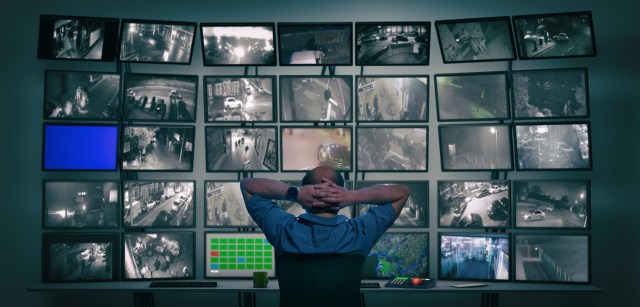Credit: Getty

We all know the arguments against prison as a form of punishment. It’s inhumane. It’s expensive. It’s counter-productive.
The counter-argument – that ‘prison works’ – is based on at least one incontestable truth: when criminals are locked-up, they can’t do anything to harm the general public.
But what if offenders could be kept apart from the public – at least in the situations where they’re most likely to cause harm – without the need for, and disadvantages of, imprisonment?
That, of course is what the electronic tagging of convicted offenders (or people awaiting trial) is supposed to achieve. But does it? Reporting from the US for the Guardian, Olivia Solon finds plenty of cause for doubt:
“The use of GPS ankle monitors in the American criminal justice system is on the rise – up 140% between 2005 and 2015, says the latest data available. The government uses these devices to track the location of individuals to make sure they are complying with the terms of their release, whether that’s being at home every night after a certain time or avoiding specific places…
“But wearers described them as digital shackles that deprive them of their liberties in cruel and unexpected ways.”
One very basic difficulty is keeping the batteries charged:
“Every day at about 5pm, 60-year-old Willard Birts has to find a power outlet. Then he has to wait two hours next to it while the battery on his ankle monitor recharges. If he lets the battery drain… he risks being sent back to jail while he awaits trial.”
And then there’s the cost:
“Birts pays $30 per day – that’s $840 per month – for the privilege of wearing the bulky device. It sucks up all his income, leaving him homeless and sleeping in his Ford Escape in Oakland…
“… in some cases the county covers the total cost of the technology – after all, it’s saving money on extra beds in prison – while in others fees for the wearer range anywhere from $10 to $35 per day.”
Of course, any anxiety that something may go wrong with the ankle monitor, and thereby lead to re-imprisonment is preferable to actually being in prison. Nevertheless, there has to be a better way.
For a start, if those required to wear such devices have to pay for the privilege, it should only be in the form of a percentage levy on their earnings. This would give the system operators a direct stake in offender rehabilitation and employment.
However, we need better technology too. Solon says that devices currently in use aren’t just cumbersome and dependent on batteries, they can also send out false information. Then there are cases in which offenders have illegally removed their ankle monitors and committed serious crimes in the time it took the authorities to catch up with them.
No doubt there’s scope to improve the reliability and robustness of these undesirable ‘wearables’, but it maybe that the most effective way of electronically monitoring offenders is a system that monitors everyone.
I’ve written before about developments in CCTV and facial recognition technology. Imagine a future – probably not too distant – in which networked camera coverage is ubiquitous, providing a constantly updated flow of visual data from which individuals can be automatically identified and their movements tracked at all times. Note that these systems wouldn’t even need a continual view of the target’s face. People can be identified by other means, for instance, by they way they walk – so called ‘gait recognition’.
Such systems are already operating in some places – and the algorithms that do the identification are getting smarter all the time and the sensors that gather the data are getting smaller and cheaper. At some point we will cross a threshold of coverage, reliability and affordability that renders ankle monitors obsolete.
A CCTV-based system would have several advantages. There’d be no device to wear, no device that could be removed, no single device on which the monitoring of each individual would depend.
As with a GPS ankle monitor, the system could be used to facilitate curfews and/or geographical restrictions on movements during non-curfew hours. But, in theory, a camera network plus AI-based analysis of data could do so much more than monitor location. For instance, it might be able to identify not just the target, but also individuals or types of individual that the target was in proximity to. This could be used, for instance, to prohibit interactions between the target and other convicted criminals – the precise opposite of what a custodial sentence achieves.
Never mind making ankle monitors obsolete, advanced CCTV could make prison obsolete for all but the most dangerous offenders.
If you’ve read this far, then the word ‘Orwellian’ may well have occurred to you. And not without reason. The purpose of a prison is to create an environment in which every aspect of a person’s life can be controlled. Advanced, ubiquitous CCTV will turn everywhere into such an environment. And, whether directly targeted or not, we’d all be on the inside.










Join the discussion
Join like minded readers that support our journalism by becoming a paid subscriber
To join the discussion in the comments, become a paid subscriber.
Join like minded readers that support our journalism, read unlimited articles and enjoy other subscriber-only benefits.
Subscribe